
Guests
- Michael Isikoffinvestigative correspondent for Newsweek. He has the cover story in the latest issue of the magazine. It’s called 'The Fed Who Blew the Whistle'
The whistleblower behind the exposure of the Bush administration’s domestic spy program has revealed his identity. In an interview with Newsweek, former Justice Department official Thomas Tamm says he personally called the New York Times from a Washington, D.C. subway pay phone in 2004 to tell them about the program. Tamm was working as an attorney in the Justice Department’s Office of Intelligence Policy and Review. The secretive unit oversees surveillance of terrorist and espionage targets. [includes rush transcript]
Transcript
AMY GOODMAN: The whistleblower behind the exposure of the Bush administration’s domestic spy program has revealed his identity. In an interview with Newsweek, former Justice Department official Thomas Tamm says he personally called the New York Times from a Washington, D.C. subway pay phone in 2004 to tell them about the program. Tamm was working as an attorney in the Justice Department’s Office of Intelligence Policy and Review. The secretive unit oversees surveillance of terrorist and espionage targets.
The decision to become a whistleblower has permanently altered Thomas Tamm’s life. His home was raided last year. FBI agents have questioned his family and friends. He no longer works for the government. He suffers from depression and is $30,000 in debt. Tamm still faces possible arrest. Despite his current situation, he said he has few regrets. Tamm told Newsweek, “I thought this was something the other branches of the government — and the public — ought to know about. So they could decide: do they want this massive spying program to be taking place?”
Newsweek correspondent Michael Isikoff broke the story on Tamm’s coming forward. It’s the cover article in the latest issue of Newsweek, called “The Fed Who Blew the Whistle.”
Michael Isikoff joins us now from Washington, D.C.
Welcome to Democracy Now!, Michael.
MICHAEL ISIKOFF: Good to be with you, Amy.
AMY GOODMAN: Well, why don’t you start by telling this story from the beginning? How was it that Mr. Tamm discovered this? And just what his background was.
MICHAEL ISIKOFF: Sure, and I have to say, his background is one of the most fascinating parts of this story. He is a veteran prosecutor, but comes from a family steeped in FBI history. His uncle, Edward Tamm, was a top aide to J. Edgar Hoover, who invented the name FBI in 1935 and its motto, “Fidelity, Bravery, Integrity.” His father, Quinn Tamm, was also a top aide to Hoover and assistant director of the FBI and the head of the FBI’s crime lab. When Thomas Tamm was a youngster, was a toddler, he played under the desk of J. Edgar Hoover during FBI ceremonies, and he watched John F. Kennedy’s inauguration from the balcony of J. Edgar Hoover’s office suite, then at the Justice Department. So this is a man who is very steeped in the ethos of law enforcement.
He chose a somewhat different path: to become a public prosecutor, rather than an FBI agent. He served for years as a top prosecutor in the Montgomery County State’s Attorney’s Office and then, in 1998, got a job at the Justice Department, first in the Capital Case Unit, the unit that reviewed death penalty cases, and, while there, received, as part of that unit, one of the Justice Department’s highest awards, the John Marshall Award, that was personally given to him by then-Attorney General Janet Reno.
He stayed on during the era of John Ashcroft as Attorney General at the Capital Case Unit and then transferred in 2003 to the Office of Intelligence Policy and Review, which is probably the most sensitive unit in the Justice Department. It is the unit that handles national security wiretaps of suspected terrorists and spies and presents the applications for wiretaps to the FISA court, the Foreign Intelligence Surveillance court set up by Congress in 1978 to ensure that such wiretaps have legitimate probable cause. This was set up to avoid the kind of well-publicized abuses by US intelligence agencies that were exposed by the Church Committee in the late 1970s.
So, while Tom Tamm is working at the Office of Intelligence Policy Review, he sort of stumbles upon some unusual procedures that are going on, that certain wiretap requests from the intelligence agencies are handled in different ways, under special procedures, where they — these wiretap requests, which involved information gleaned from something he only knew was called “the program,” could only go to the chief judge of the FISA court, not the other judges of the court, and those applications could only be signed by the Attorney General, not the Deputy Attorney General, as all other applications could. And this puzzled him. Why are there these unusual procedures for something called “the program”? What is “the program”? What are we doing here?
And as he recounts it in the story, he began to ask questions about this within the office, the office — OIPR, as it’s called. And basically, he was shut down. He was told, “Don’t raise questions about this. Stop talking about it.” One of his supervisors tells him that the program is, quote, and as Tamm recalls it, “probably illegal.” At another point, shortly after that, he runs into the deputy chief of the office, of OIPR, and learns that there is a great deal of consternation, because the chief judge, the one who was only getting those program applications, has raised serious objections to it and that she’s going to shut the program down, and even the Attorney General could get indicted over this. Now, again, Tamm is struck by this. What is this all about? Why would the Attorney General get indicted over something that the Justice Department was doing?
He tried to take it to some — a former colleague who was working at the Senate Judiciary Committee to raise concerns — does Congress know about what “the program” is, about what’s going on inside the Justice Department? — and was told that, by this former colleague, that he shouldn’t be asking questions about this. This is — he should just mind his own business.
So, Tamm, as he put it in the series of interviews that I did with him, was deeply troubled by this, agonized over what to do. The idea of lawlessness at the Justice Department really angered him. And he felt he needed to blow the whistle. He didn’t fully understand what he was blowing the whistle on. I should make that clear. He didn’t at this point really know what “the program” was. He knew it had something to do with the National Security Agency. He didn’t know what, precisely, they were doing that was raising such alarm bells within the Justice Department and by the chief judge of the FISA court. But finally, at one point, he does duck into a Washington, D.C. Metro stop, the Judiciary Square Metro stop. And as he recounts it, his body was trembling, his heart was pounding, it was — he was very nervous. He slips into a partially concealed phone booth and calls reporter Eric Lichtblau of the New York Times.
AMY GOODMAN: Ultimately, this is a story that won the New York Times
a Pulitzer Prize. Both Eric and James Risen wrote books about this. Talk about what he told them, though they also had other sources, and then what happened —-
MICHAEL ISIKOFF: Right.
AMY GOODMAN: —- to Thomas Tamm from there, Michael Isikoff.
MICHAEL ISIKOFF: Right. Tamm was essentially the guy who tipped the paper off. He wasn’t able to tell them what “the program” was. And that’s pretty clear if you read Eric Lichtblau’s book. He talks about getting a blind phone call from a walk-in source who he didn’t know, who told him about troubling developments inside the Justice Department and how the Attorney General could get indicted, but he didn’t — but he was maddeningly vague and wasn’t quite sure what it was all about. But this spurred Lichtblau on to try to figure out what Thomas Tamm had stumbled upon.
He consulted with his colleague James Risen, and eventually, after a lengthy period of time — it was eighteen months from the time Thomas Tamm first made his phone call to the time the New York Times finally broke the story three years ago yesterday, front page, December 15th, 2005, that President Bush had secretly authorized the National Security Agency for the first time to eavesdrop on conversations and emails of US citizens.
Now, from that moment, of course, while that story provoked an uproar in Washington, demands by congressional Democrats, including then-Senator Barack Obama, for hearings, denunciations of the Bush administration for violating the FISA law, and, as you mentioned, the New York Times winning the Pulitzer Prize the next year, Thomas Tamm comes under scrutiny by the FBI. They launch a major criminal investigation of him as the leaker. Tamm suspects they got onto him because they accessed his Justice Department computer and saw the email he sent to the former colleague on Capitol Hill asking to get together, and they tracked that woman down, and she told them about Tamm’s concerns. And Tamm apparently acknowledges that he did indicate that if Congress wasn’t going to do anything, that he thought he might have to go to the press. So that’s how they get onto him.
And the investigation has been relentless ever since. Last summer in — summer of August of 2007, eighteen FBI agents in flak jackets and guns show up at his home in suburban Maryland, raid the home, haul away his computers, his children’s laptops, his personal possessions, books, his Christmas card list. They grill his wife and two of his three children. They’ve since been relentless in tracking down his friends and former associates, looking for Tamm’s motivations in going to the press.
They are concerned that the public might view him as a do-gooder, and if they do, it would be hard to bring a criminal case against him. But if they can show that he operated for political motives, out of animus towards the Bush administration or because he’s a disgruntled former Justice Department employee, then they think they might have a criminal case to charge him.
So, basically Thomas Tamm has lived under a cloud for the last two-and-a-half years, uncertain whether he could get arrested at any time or indicted. And ultimately, because of that, he finally decided to come forward. I had a series of many hours of interviews with him over the past few months, and we lay out the story in this week’s Newsweek cover story.
AMY GOODMAN: Michael Isikoff, explain how this relates to the bedside meeting with James Comey with then-Attorney General John Ashcroft, who was very sick at the time, with Gonzales charging in.
MICHAEL ISIKOFF: Right, right. It’s fascinating, because Tamm’s concerns about what was going on inside the Justice Department OIPR office is coming at the same time that the Deputy Attorney General James Comey and the Assistant Attorney General Jack Goldsmith are raising concerns about this very same program. Tamm doesn’t know about what Comey and Goldsmith are doing. He’s totally independent from that. This is a separate track. But it’s striking that at precisely the same time, Comey and FBI Director Bob Mueller are threatening to resign because of what — because of the program that the President has authorized and the way it’s being conducted.
And there’s a third thing going on, which Tamm did pick up on, which I referred to before, and that was the concerns of Judge Kollar-Kotelly. And in the piece, we quote for the first time the former chief judge of the FISA court, Royce Lamberth, who was acting as an adviser to Judge Kollar-Kotelly at this time, and he says on the record that Judge Kollar-Kotelly had discovered that the Justice Department was “back-dooring intelligence” into the FISA court. In other words, they were taking extralegal evidence from the NSA wiretapping program, which is not authorized by statute, and trying to use it — essentially launder it into a legitimate FISA warrant before the court, so they could then ultimately make a criminal case against US citizens who had been first identified by this extralegal NSA wiretapping program.
AMY GOODMAN: Now, Michael, explain the significance of this, because while the US says they’re trying to gather this information in the war on terror, spying on US citizens, they actually cannot use these wiretap — the information they get from the wiretaps on American citizens.
MICHAEL ISIKOFF: Right. And that’s why the Judge Kollar-Kotelly’s objections at this point, which were not known at the time, not publicly known at the time, were so crucial, because she discovered something that looked to her that was highly legally questionable: using illegal evidence to try to sneak it into a legitimate legal process. And I — you know, some think this is where the NSA wiretapping program, or the fruits of that poison tree, could ultimately trip up the Justice Department. There are a number of criminal cases that were brought during this period that lawyers, defense lawyers, suspect may have used some of this NSA wiretapping evidence. And if they — and they are pressing in appellate courts and in criminal courts for full disclosure about what happened here. So we may be hearing more about that aspect of that in the weeks and months to come.
AMY GOODMAN: Michael Isikoff, tell us what else you learned in this investigation, for example, about data mining.
MICHAEL ISIKOFF: Well, yes. The sweep of the program was far more extensive than was commonly understood at the time. I think this — when it first got reported three years ago, it was that the NSA was eavesdropping on conversations between US persons and individuals abroad who were suspected of possible al-Qaeda affiliations. But, in fact, the real part of the program that was the most extensive part and that was raising the most concerns went far beyond it. It was data mining. The NSA was collecting vast amounts of phone records and email accounts, times of phone calls, records of phone calls, records of emails, hundreds of — potentially hundreds of millions of these, and feeding that information into its NSA supercomputers, looking for patterns and links that might or might not suggest terrorist activity. Yet a third track of it was financial records. Millions of credit card transactions, bank withdrawals, other personal financial records were — for the first time, the NSA was getting access to them and feeding them into its computers.
So what you had was a staggering amount of records, of personal records on American citizens, phone records, emails, financial records, that were all being fed into these computers. And as the NSA began to look and sort through to try to find patterns that some analysts believe might suggest terrorist activity, the question — the operative word there is “might,” because, as we know, in so many cases along these lines, in that kind of link analysis, you could come up with suspicions about people who are entirely innocent.
AMY GOODMAN: The name of the NSA, the National Security Agency’s phone call and email collection program, tapping?
MICHAEL ISIKOFF: The code name, revealed for the first time this week in Newsweek, it was “Stellar Wind.”
AMY GOODMAN: And this whole program began just after the attacks in October of 2001?
MICHAEL ISIKOFF: Just after 9/11, when, you know, to be fair — and we should make it clear — there was legitimate concern at that point that there might be other al-Qaeda cells inside the United States, and a number of senior officials, especially led by Vice President Cheney and his chief of staff, or then chief counsel, now chief of staff, David Addington, believed that the FISA court was too cumbersome and wasn’t fast enough and nimble enough in order to allow intelligence agencies to quickly get warrants on suspected operatives under the — inside the country. Addington, according to Jack Goldsmith in his book, refers to that obnoxious court, the FISA court; we might finally be able to get rid of it if there’s another attack. So it was that concern about identifying potential terrorists inside the United States that led the President to authorize a program that was not authorized by statute. On what authority did the President do it? His commander-in-chief authority in wartime, that as commander-in-chief, he had the authority to direct and order interceptions of conversations to protect the country.
And, you know, there probably would have been a healthy debate about that, had this been public at the time, but instead it was kept under the most super secret basis. It was probably the most secret program inside the government. And the extent and reach of the program was not fully understood. The extent of the breadth of assertion of executive power by the President was not publicly known at the time. And it was only later and in part — and in large part, frankly, because of Thomas Tamm’s phone call, that all this was ultimately exposed and the country was able to have a debate about what was going on about the extent of this. And, of course, as we know, Congress last year, or earlier this year, passed the new law that governs the way such surveillance is conducted. Congress changed the law because of the revelations about the way this program had been conducted.
AMY GOODMAN: And Thomas Tamm today, he was encouraged to plead guilty to a felony?
MICHAEL ISIKOFF: Yes, after the raid on his home last year, prosecutors tried to get him to plead guilty. There are two statutes that he could be charged with. One is called the Espionage Act. It’s a World War I law that prohibits communication — disclosure of information that might be harmful to the national defense. There’s another law from 1950 that prohibits disclosure of communications, information, intelligence.
It’s unclear whether Tamm could legitimately be charged under either of these laws, because, as I pointed out, he was not — and he points out — he didn’t disclose any sources and methods used by US intelligence agencies. He didn’t disclose specifics of this program at all. What he disclosed was concerns about the legality of Justice Department procedures. And so, it may be a difficult stretch for the Justice Department to bring a case against him, but the FBI has been relentlessly pursuing him. As recently as a couple of weeks ago, they interviewed one of his longtime associates, a former mentor of his, a retired judge, Andrew Sonner, who told the FBI agents off, telling them that if Tom Tamm did something like this, “I’d be proud of him” for doing it. And basically, Tamm’s lawyers have been told that the decision on whether to prosecute, at this point — at least before the story came out, they were saying that they were going to leave it to the Obama Justice Department to sort out.
AMY GOODMAN: Well, we will leave it there. Michael Isikoff, thank you very much for joining us, investigative correspondent for Newsweek. His cover story is called “The Fed Who Blew the Whistle,” about Thomas Tamm.

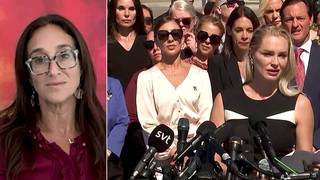
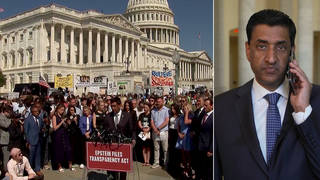
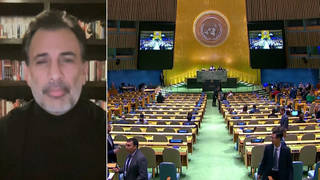
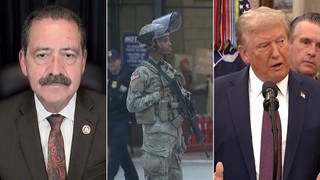
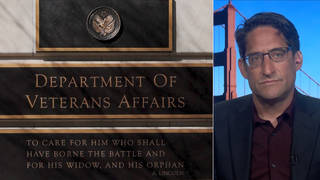
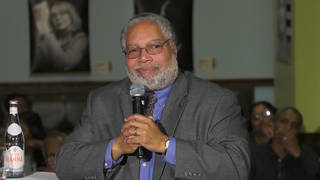

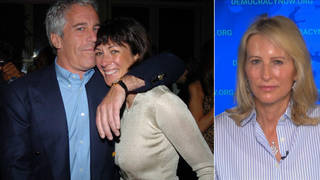

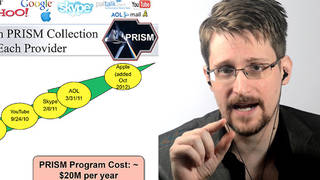
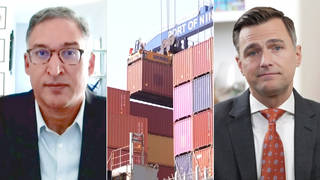
Media Options